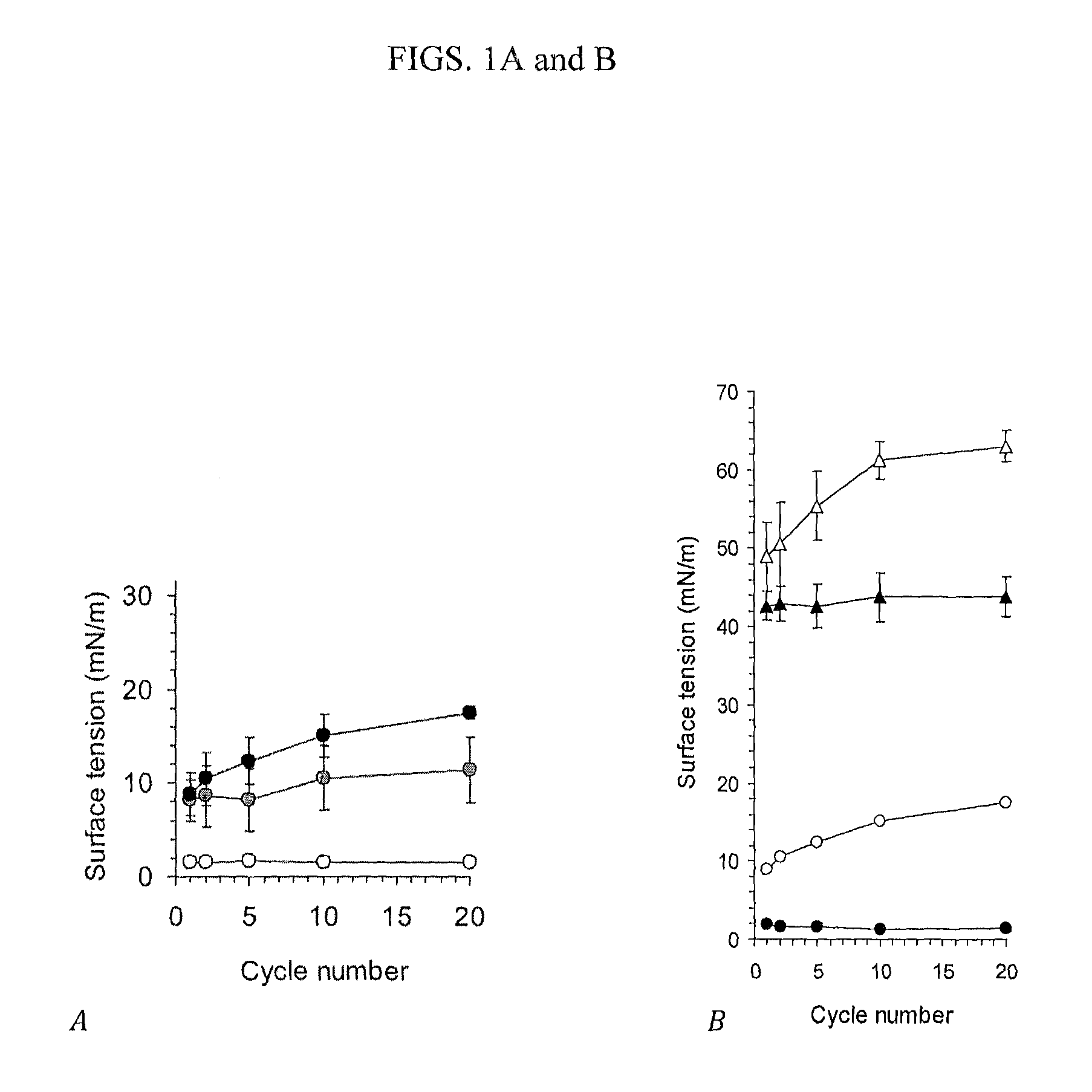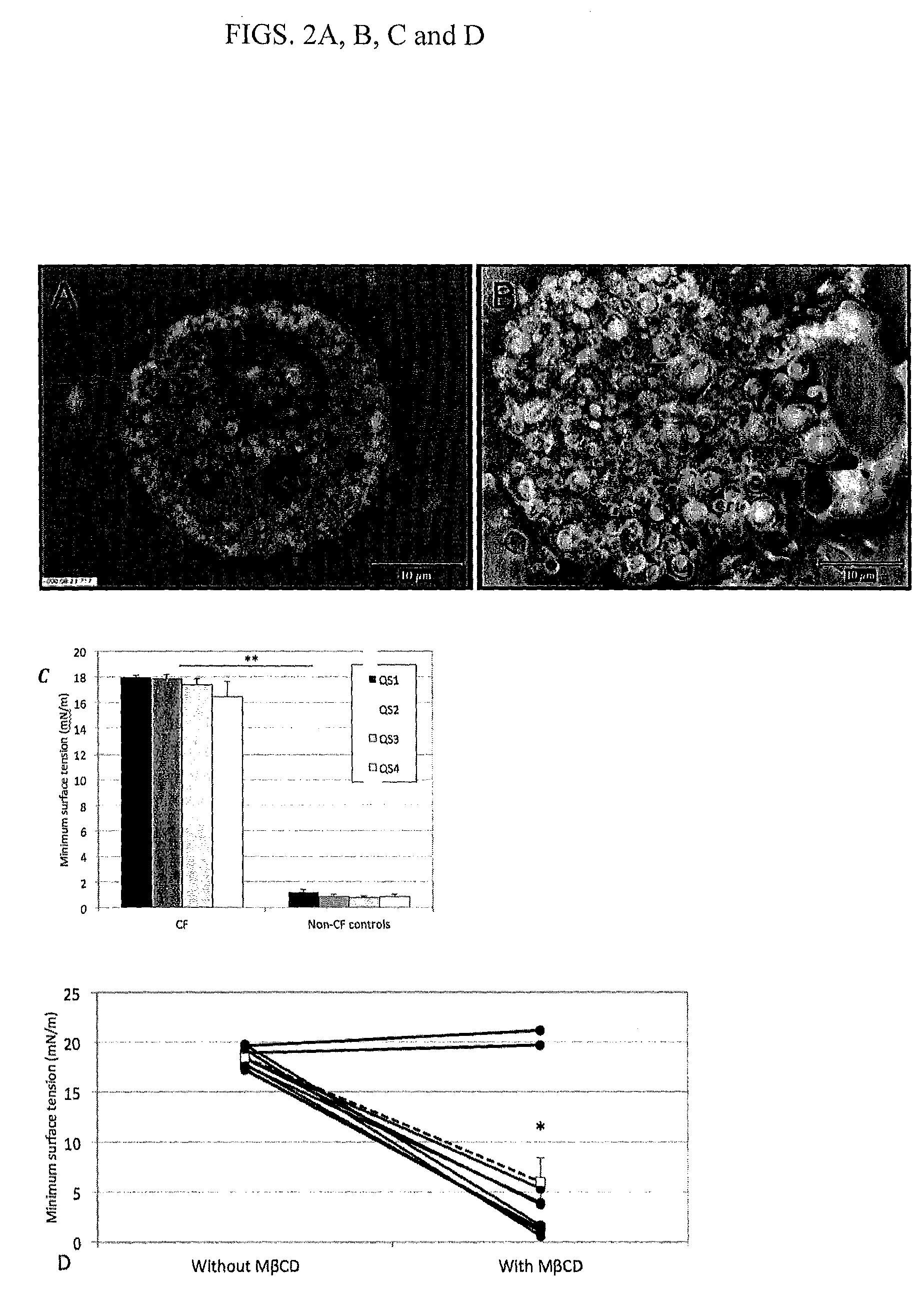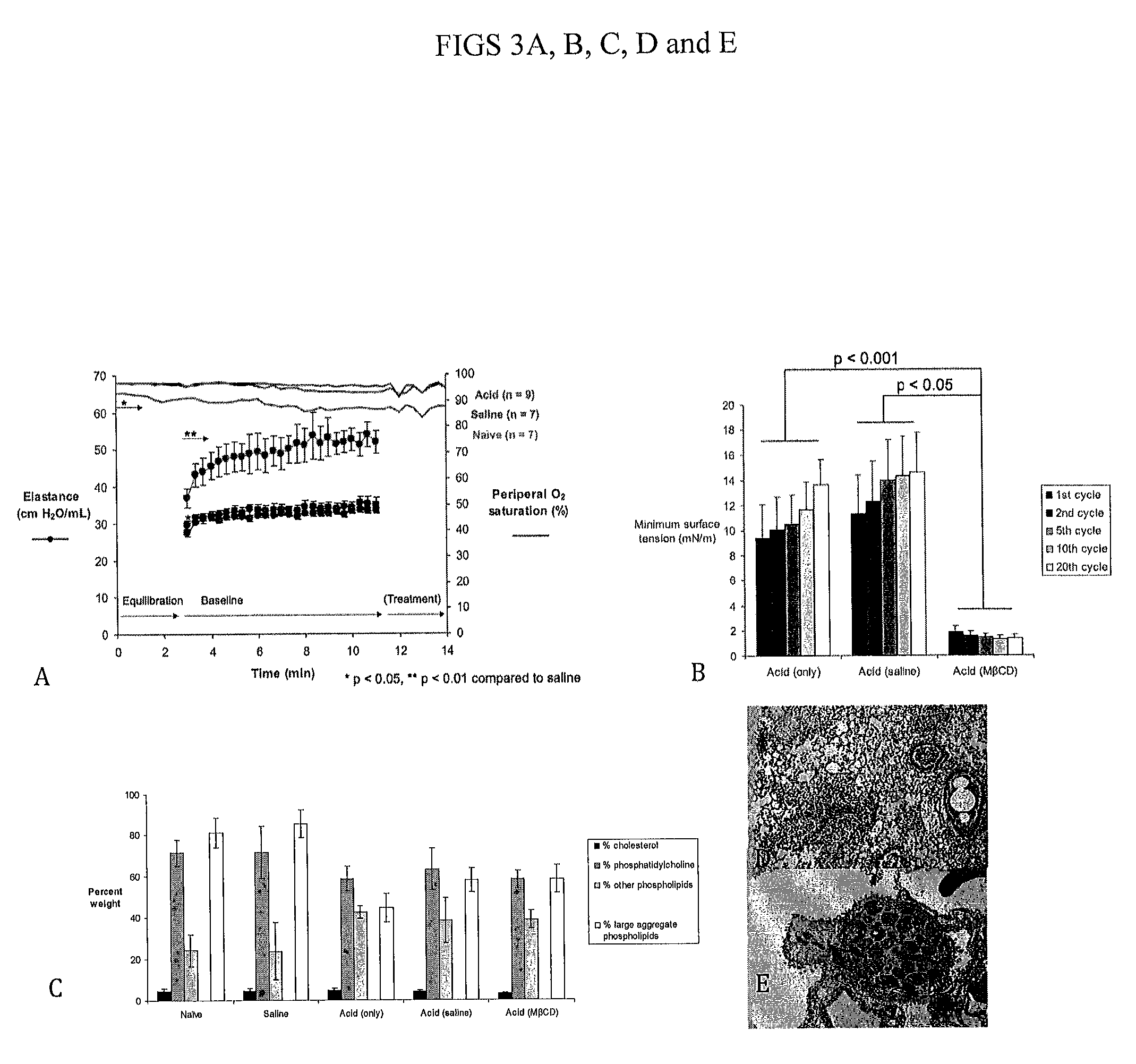Method of treating pulmonary surfactant dysfunction or respiratory distress syndrome by administering cyclodextrin or a derivative thereof
a technology of pulmonary surfactant and cyclodextrin, which is applied in the direction of biocide, plant growth regulator, pharmaceutical non-active ingredients, etc., can solve the problems of respiratory distress syndrome, high cost of animal preparations, and high risk of transmitting infectious diseases, so as to improve the surface tension of inhibited surfactants and enhance surfactants
- Summary
- Abstract
- Description
- Claims
- Application Information
AI Technical Summary
Benefits of technology
Problems solved by technology
Method used
Image
Examples
example 1
[0100]In a model study, 0, 5 and 10 weight percent cholesterol was added to a ROS-exposed cattle lipid surfactant extract as an example of how even a normal (physiological) amount of cholesterol renders surfactant exposed to ROS and its derivatives dysfunctional; the function of the surfactant model was determined in a captive bubble surfactometer (CBS).
[0101]In the absence of methyl-β-cyclodextrin (MβCD) (FIG. 1A), i.e. with unenhanced surfactant, the surface tension remained nearly unchanged near the equilibrium at 23 mN / m indicating severe surfactant is dysfunction.
[0102]In the presence of methyl-β-cyclodextrin (MβCD) (20 mmol) (FIG. 1B), i.e. with enhanced surfactant, in the aqueous phase the surfactant regained its normal function and the surface tension receded to almost zero.
example 2
[0103]In this study with pediatric CF surfactant samples (n=10, FIG. 2 A-D), we found a high level of surfactant dysfunction. Cholesterol in the bronchoalveolar lavage BAL was increased to 17.6±6.2 wt % compared to lung-healthy control samples (5.5±0.9 wt %; n=5), who also showed normal surfactant function (FIG. 2C). When CF surfactant was re-tested in the presence of MβCD, a majority (8 / 10) of samples now showed restored function (FIG. 2D), suggesting that cholesterol was responsible for the dysfunction. The high cholesterol is explained by a CF-specific defect in cholesterol homeostasis (White, N. M. et al. Altered cholesterol homeostasis in cultured and in vivo models of cystic fibrosis. Am. J. Physiol.—Lung Cell. Mol. Physiol. 292, L476-L486 (2007)). On the other hand, five non-CF bronchiolitis surfactant samples from children were also dysfunctional and their function was also restored by MβCD despite normal cholesterol levels (5.6±0.5 wt %). The latter may be explained by our ...
example 3
[0104]In this study, a murine model of acute lung injury (ALI), the earliest phase of ARDS, was created by acid injury of the lung according to published procedures (Allen, G. B. et al. Neither fibrin nor plasminogen activator inhibitor-1 deficiency protects lung function in a mouse model of acute lung injury. American Journal of Physiology-Lung Cellular and Molecular Physiology 296, L277-L285 (2009)) and analyzed with respect to lung mechanics, oxygenation, lung histology, lung ultrastructure, surfactant function and composition (FIGS. 3A-E). Elastance (or its inverse, compliance) and pressure-volume curves are commonly used to assess lung function in ALI / ARDS (JONSON, B. et al. Pressure-volume curves and compliance in acute lung injury. American journal of respiratory and critical care medicine 159, 1172-1178 (1999)). Our initial data with this model shows cholesterol-dependent surfactant dysfunction despite physiologically normal levels of cholesterol (and an otherwise normal lip...
PUM
| Property | Measurement | Unit |
|---|---|---|
| surface tension | aaaaa | aaaaa |
| surface tension | aaaaa | aaaaa |
| surface tension | aaaaa | aaaaa |
Abstract
Description
Claims
Application Information
 Login to View More
Login to View More - R&D
- Intellectual Property
- Life Sciences
- Materials
- Tech Scout
- Unparalleled Data Quality
- Higher Quality Content
- 60% Fewer Hallucinations
Browse by: Latest US Patents, China's latest patents, Technical Efficacy Thesaurus, Application Domain, Technology Topic, Popular Technical Reports.
© 2025 PatSnap. All rights reserved.Legal|Privacy policy|Modern Slavery Act Transparency Statement|Sitemap|About US| Contact US: help@patsnap.com



